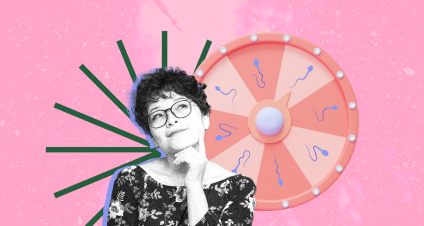This article was supported by Pfizer Medical Affairs
You're powering through your day — balancing work, family, and maybe even squeezing in a quick workout — when out of nowhere, a pounding headache stops you in your tracks. Just like that, your plans take a backseat.
If these headaches keep showing up uninvited, you might start wondering: Is this just a bad headache, or could it be something more — like a migraine?
Understanding the difference is key to taking control of your health. Let’s break down the signs, pinpoint the triggers, and help you find ways to get the relief you need.

What exactly is migraine?
Migraine is like the overachiever of the headache world — always doing the absolute most. Unlike an ordinary headache, migraine is a complex neurological disorder that can cause a whole host of symptoms beyond just head pain.
While the pain itself can be debilitating, that’s often just the beginning. Many people also deal with nausea, vomiting, and extreme sensitivity to light and sound. Some people living with migraine even experience auras, strange visual or sensory disturbances that show up shortly before a migraine attack.
Chronic headaches vs. migraine
Headaches and migraine both bring discomfort, but they’re definitely not the same thing. There are many different headache disorders but tension-type headaches and migraine headaches are two of the most common. A typical tension headache feels like a dull, all-over pressure — not fun, but usually manageable with some over-the-counter pain relievers. Migraine, on the other hand, brings intense, throbbing pain, often on one side of the head, and it doesn’t just slow you down — it can completely derail your day.
When a migraine attack hits, you might have no choice but to cancel plans, miss work, or retreat to a dark, quiet room. And here’s the tricky part: migraine symptoms can change over time. What starts as occasional attacks can turn into chronic migraine, which means experiencing a migraine headache more than 15 days per month.

Migraine symptoms to look out for
Now that we know migraine is more than just a headache, how do you recognize one? Here are some key signs:
- Throbbing, intense pain: A pulsing or pounding sensation, usually on one side of the head but sometimes both.
- Nausea and vomiting: If your headache comes with a side of queasiness, it could be migraine.
- Sensitivity to light and sound: Do bright lights or loud noises suddenly feel unbearable to you? That’s a classic migraine symptom.
- Visual disturbances (aura): Some people see flashing lights, zigzag lines, or even experience temporary vision loss before or during a migraine attack.
- Long-lasting pain: While regular headaches may last a few hours, a migraine headache can last several days.
- Difficulty concentrating: Brain fog and trouble focusing are common with migraine.
- Fatigue: Even after the pain fades, migraine can leave you feeling completely drained.

Where does the pain come from?
Migraine triggers vary from person to person. Think of your brain as having its own "pain button," and different things can push it. Some common triggers include:
- Hormonal changes: Many women experience migraine around their period, during pregnancy, or menopause.
- Stress: As if stress wasn’t already enough, it can also bring on migraine symptoms.
- Certain foods and drinks: Caffeine, alcohol, aged cheeses, and processed foods can be common triggers.
- Changes in sleep patterns: Too much or too little sleep can throw off your body’s rhythm and bring on a migraine headache.
- Weather shifts: Some people are especially sensitive to changes in barometric pressure.
- Strong smells: Perfumes, cleaning products, or other strong odors can be a trigger.
When should you get help?
If you’re reading this and thinking, "This sounds like me!" — don’t panic. Migraine can be disruptive, but it's often manageable with the right approach.
You should check in with a healthcare provider if:
- Your migraine headaches are interfering with daily life — causing you to miss work, cancel plans, or struggle with normal activities.
- You’re taking over-the-counter pain medications more than a couple of times a week.
- Something feels off, and you want answers (trust your instincts!).
Be honest with your doctor and don’t hesitate to advocate for yourself. They can help confirm if you’re dealing with migraine and develop a treatment plan that works for you.

Living with chronic migraine
Migraine can be frustrating and disruptive, but it doesn’t have to control your life. Keeping a headache diary can help identify triggers and patterns, making it easier to find a treatment plan. This could involve medication, such as CGRP-targeting drugs, lifestyle changes, or other strategies.
Most importantly, remember that you’re not alone. Migraine is common, especially among women, but finding what works for you can make a big difference.
Blair Sharp is a freelance writer who lives in Minnesota with her husband and son. Her words have been published in various publications, including Parents, SheKnows, The Bump, and Insider. You can find her watching reality TV and sharing too many reels with her friends when she's not writing. To connect with Blair, find her on LinkedIn and Instagram, or head to her website www.blairsharp.com.








.webp)

.jpg)








